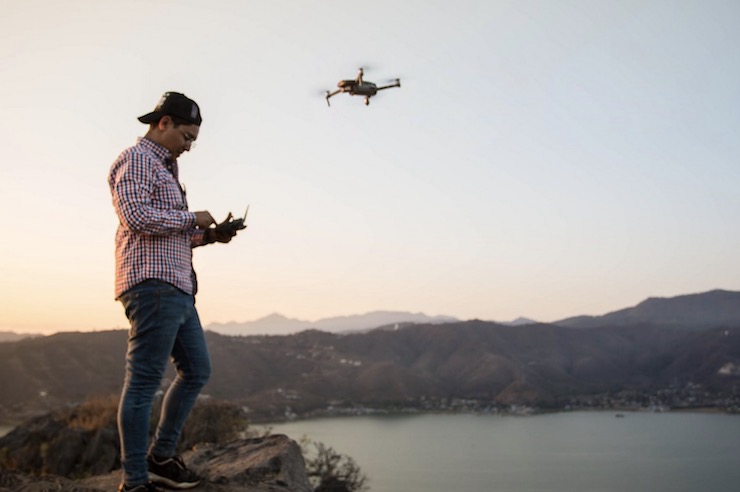Hybrid Drones Using Batteries and Fuel to Extend Flight Times

There is the age old question, what came first the chicken or the egg? Scientists have finally given us an answer. Technically, though not simply, it was the egg. A similar question can be posed when thinking of how a drone is designed. What comes first the drone or the battery? For a drone to work it needs a power source. But the size of a drone can not surpass the power it’s battery can supply. So, the bigger the drone the bigger the battery needs to be. When an engineer is planning out a drone do they first decide how big the drone will be or how powerful the battery will be?
Perhaps there is a way to not even worry about the battery life of drone.
For the average backyard hobby drone the battery life lasts for around 10-15 minutes. Battery life for larger commercial drones can give a flight time of around 20-30 minutes. At which point the drone would need to be recharged or have it’s battery switched out for a fresh one. For these extended flight times it is best to look for a drone with brushless motors and a lithium battery. Even still, this greatly limits the scope of possibilities that can be accomplished with drones.
Several engineers are toying with the idea of creating a hybrid drone that doesn’t need to rely on a battery for the drone’s size in relation to flight time. They are proposing using fuel to power drones. And why not? Military drones use fuel to be able to stay airborne for 30 hours. Manned planes and helicopters safely use fuel as a power source. Agricultural drones that carry insecticides have proven that drones can easily carry a liquid payload as well.
One such individual looking into the sustainability of a hybrid drone is Nicolai Valenti. Nicolai is an 18 year old drone enthusiast who said, “I decided so because of the range and the autonomy where too limited.” He began posting his questions and ideas about how to build a fuel based generator for a drone on a drone forum. He found so much support there that he decided to start building in his garage. Through a many iterations, Nicolai came up with a drone that has a brushless motor attached to a small tank of gasoline to power it. As of now Nicolai’s gas hybrid drone can stay airborne for up to 1 hour!
Nicolai certainly isn’t the only one interested in a creating a hybrid drone that uses a liquid propellant. Peter McCloud has been working as an aerospace engineer for more than a decade now. He has worked on the Space Shuttle Program Orion. Now he is working on a quadrocopter he calls Goliath, an open source gas powered drone. He stated that “The current design is based on a single central gas engine with a belt drive providing power to the four propellers.” It is a supercharged gas powered drone hybrid. It uses a 30 horsepower V-twin Briggs and Stratton Commercial engine, the same engines used to power lawnmowers. With a massive engine, aluminum frame, exhaust systems, and custom 36″ propellers the Goliath weighs a staggering 240lbs. Peter has yet to test his quadrocopter’s flight, but he is getting close.
One thing that both Peter and Nicolai have had to deal with, as well as other individuals looking into hybrid drone technology, is finding a way to give the proper control to their drones. While using fuel as a power source for a drone can ensure longer flight times, it does create one major issue. The engines that are powered by the gas create a lot of vibrations. So while many drone companies are looking to find ways to make drones quieter and smoother, a hybrid drone does go against that aesthetic. Another thing that these hybrid drones feature is that they do have a backup battery in the event that the gas engine fails. As for now hybrid drones are still in the beginning stages of design. But both Nicolai and Peter are determined to design a usable and affordable drone that is not bound to the limits of a battery.
|